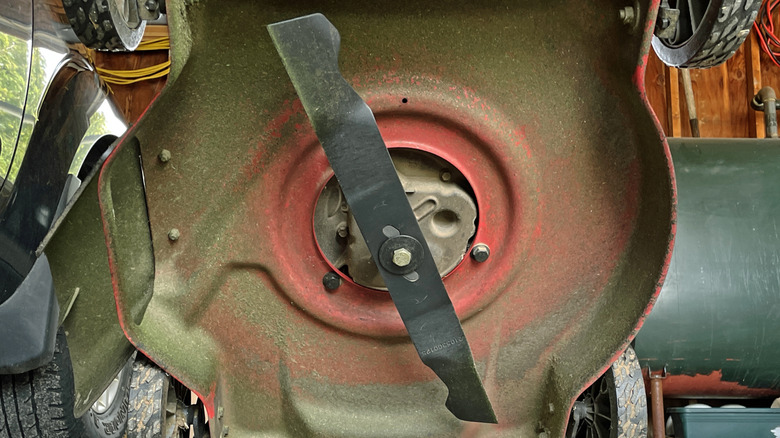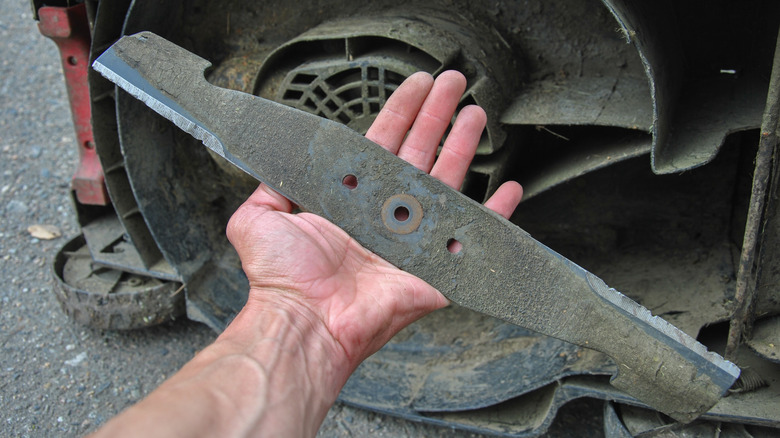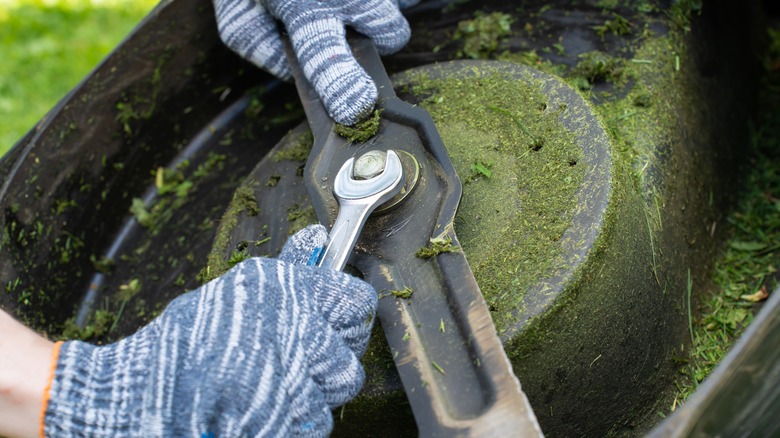Does Width Matter On Lawn Mower Blades?
Taking care of your mower means making sure you're changing your mower's oil on a consistent basis and being mindful of the blade, which will wear out over time.
A lot can go into selecting the right blade, though there are some elements that are not worth agonizing over. One of these elements is the width of your mower blade, measuring from one edge to the other. At the end of the day, it's just not that crucial of a measurement to have, as a wider or narrower blade won't play much of a role in your grass-cutting ability. At the same time, you should make note of how wide your current blade is when it comes time to buy a new one. This way you don't end up getting a blade that doesn't fit within your mower's deck.
Aside from the potential for damage by installing too big a blade, width isn't that much of a factor when it comes to freshening up your lawn mower blades. On the other hand, some measurements are essential.
Mower blade measurements more important than width
While the width of the blade is unlikely to be an important measurement, choosing too long a blade means you might not be able to attach it at all as the ends extend beyond the edge of the deck. If you're unsure of your blade's length, measure from one corner to the diagonal corner across, not simply from one end to the other. Conversely, a shorter blade will mean you cut narrower paths through your lawn — potentially increasing the mowing time.
At the center of the blade you'll find one or more holes to attach the blade. You need to know what kind of connection your mower has, or the blade won't stay on. The measuring first comes into play when looking at the diameter of these holes. For the center hole, the bolt that holds the blade in place should fit snugly through, with the nut able to tightly screw onto it. In the case of mowers that utilize the two side holes, you should know the spacing between them. Regardless of the blade, it's a good idea to double-check that you've attached your lawn mower blade right side up.
Moving beyond measurements, there's more to consider when buying a new mower blade.
Blade shape is an key consideration as well
For most folks, a standard or multi-purpose lawn mower blade will get the job done with no issue. The standard blade is a good option for thicker lawns and for different types of mowing, while multipurpose blades can also be used in different settings while offering an improved discharge of clippings while mowing. These blades are more general in terms of their performance, but as it turns out, there are other varieties of mower blade that are intended for more specific jobs.
For instance, if you're dealing with thick, tall grass, a mulching blade might be worth considering. These blades chop grass into smaller pieces, making them more effective for bagging and, as the name implies, mulching. Also excellent for taller lawns and bagging are bagging blades, which are designed to lift grass clippings up and out of your lawn to make for easier bagging and removal. Alternatively, if you don't have a very thick lawn and don't plan on bagging your grass, a sand or low-lift blade could be right for you. They create less suction to prevent dirt and sand from lifting and flying everywhere, and they prioritize discharging what grass they do cut.
There are plenty of mistakes people commonly make with their lawn mowers, with using a dull or wrong blade being a major one. Compared to other criteria, blade width isn't too much of a concern so long as it safely fits within your mower's deck and can be secured.


